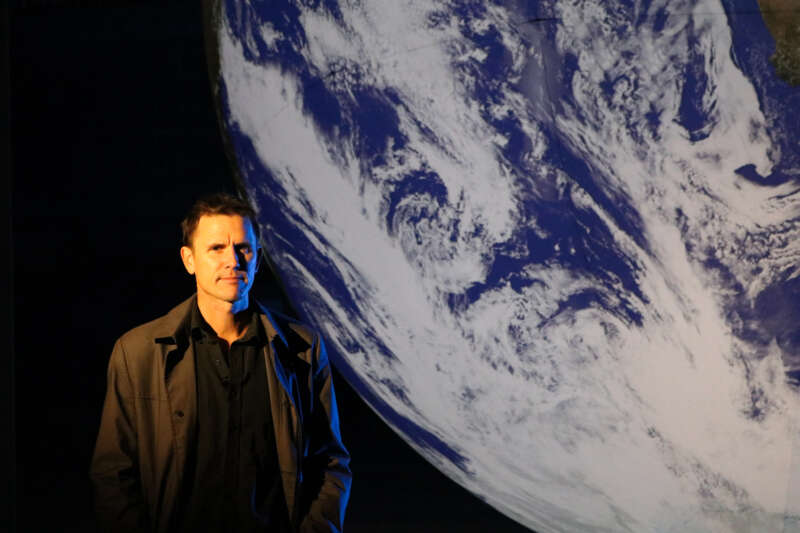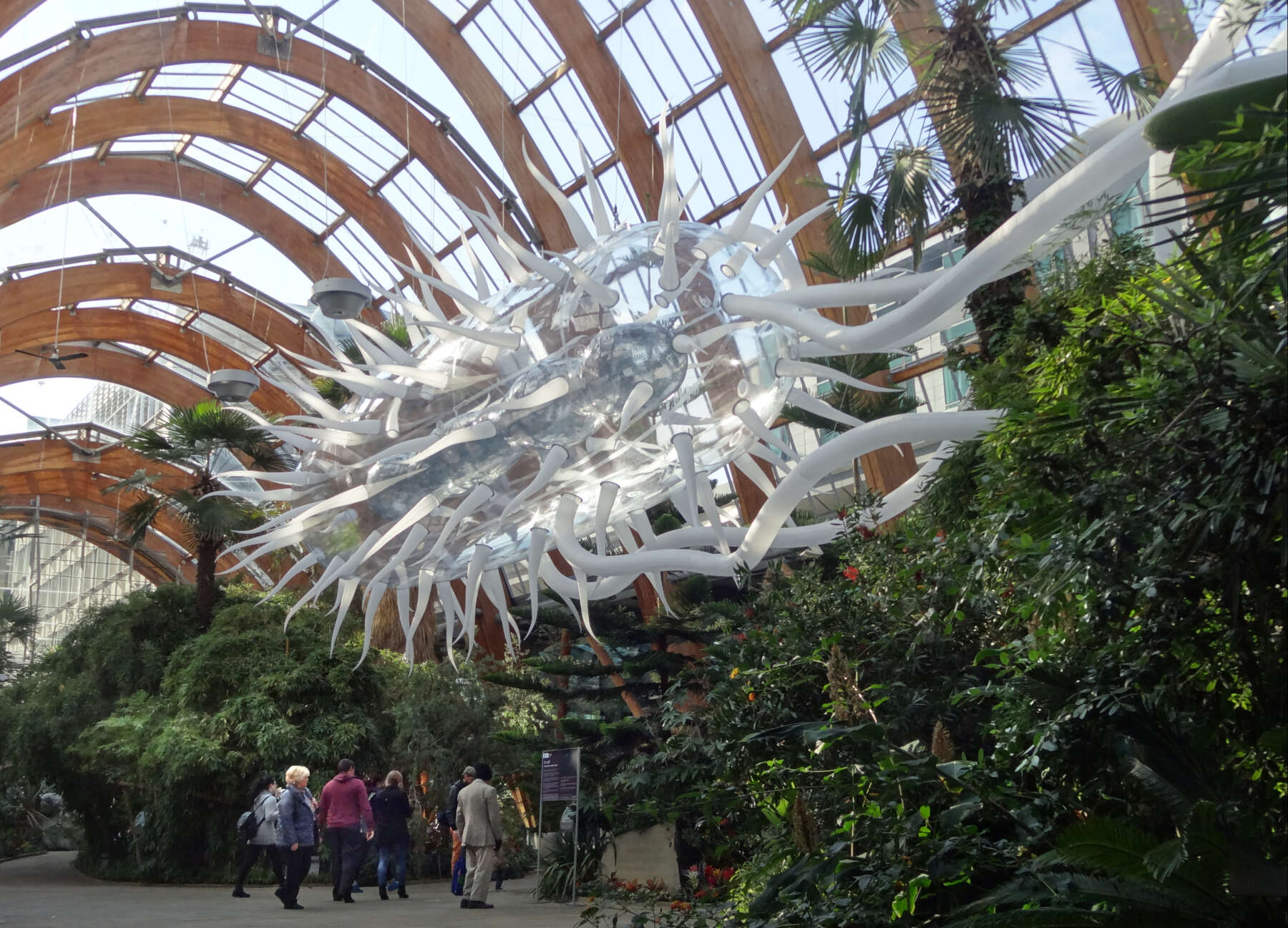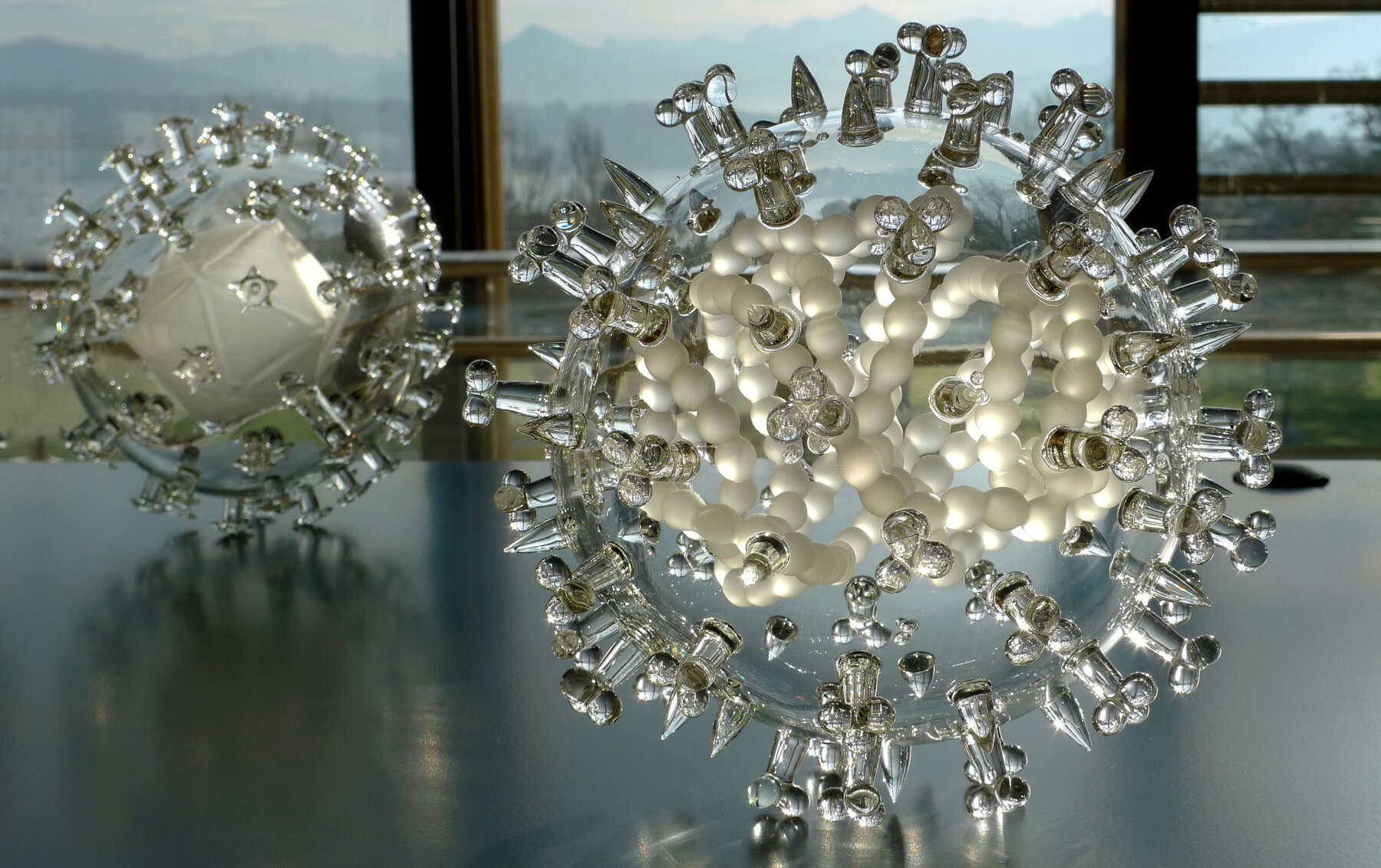British artist Luke Jerram has made a name for himself by incorporating scientific principles and concepts into his artwork. His pieces often explore the mysteries of the natural world and the ways in which science shapes our understanding of it.

National Environment Research Council (NERC) 2
One of Jerram’s most captivating installations is the “Gaia” project, which features detailed images of the Earth’s surface taken from 120dpi detailed NASA imagery. The artwork offers a unique perspective on our world, floating in three dimensions and highlighting both its fragility and its beauty. This is just one example of how Jerram’s work challenges viewers to think more deeply about the scientific phenomena that surround us.
Another one of Jerram’s installations that have a particularly strong impact on viewers is his “Glass Microbiology” project, which features intricately detailed sculptures of viruses and bacteria. The sculptures are designed in consultation with virologists from the University of Bristol, using a combination of different scientific photographs and models. They are made in collaboration with glassblowers Kim George, Brian Jones and Norman Veitch.
Photographs of Jerram’s glass artworks are now used widely in medical journals, text books and media stories and are seen as useful representations of virology within the scientific community. His work has been presented in the Lancet, the British Medical Journal and on the front cover of Nature Magazine. During the Coronavirus Covid-19 pandemic his sculpture has been used internationally for science communication.

Luke Jerram’s contributions to the world of art and science have not gone unnoticed. He has received numerous awards and accolades for his work, including being a finalist for the Wellcome Trust Science Book Prize and being awarded the prestigious Creative Wales Award from the Arts Council of Wales. His installations have been featured in galleries and public spaces all over the world, from the Victoria and Albert Museum in London to the Beijing International Art Biennale in China.
Jerram’s work has also been celebrated for its ability to bridge the gap between scientific research and public engagement, making complex concepts accessible to a wider audience. With his innovative and groundbreaking approach to art, Luke Jerram has cemented his place as one of the most important and influential artists of our time.
The Interview
Q: What first inspired the Glass Microbiology project?
Jerram: “I was reading a story about HIV in a newspaper and the illustration used was a brightly colored diagram. I did some research and found out that viruses don’t really have a color because they’re smaller than the wavelength of light. So back in 2004 I found a glassblower I’d worked with before and we made a small HIV sculpture as an alternative representation of the virus. That was bought by the Wellcome Collection and led to a large body of work that has been produced ever since.”
Q: How do you translate a microscopic virus into a large-scale 3D artwork?
Jerram: “The sculptures are a combination of electron microscope photographs and scientific diagrams. And then I interpret those into a set of technical drawings that the glass blowers use to fabricate the artwork. The COVID-19 model was quite a straightforward artwork to make by comparison to some of the other structures, for example the intricate T4-bacteriophage and E-coli. The latter is particularly difficult to transport. Most of the pieces get to museums and exhibitions in one piece, but I lent one out to Channel Four once for filming, and it came back in a very small, rattly box.”
Q: How does the process of scientific glassblowing differ from a traditional craft-led approach?
Jerram: “Scientific glassblowing is done with borosilicate glass, starting off with cold glass which is melted over a flame. It’s called lamp work. The glass team are able to make things incredibly accurately, to the millimeter. It’s a very defined skill set. There are only about 90 professional lamp workers in the country left. It’s very much a dying art. We’ve really pushed the boundaries of this type of glass – some of the artworks are even too fragile to stand up to gravity. The glassblowers have received OBEs for their work in the arts and their signature is on each artwork as well as mine.”
Q: A lot of your work is informed by scientific discovery or the wonder of science. Why is this an inspiring space for you?
Jerram: “I’m really interested in phenomena. Scientists are also interested in phenomena because they are a way of revealing and analysing the world around us. Many of the most important breakthroughs in our society come about through scientific research, so it makes sense that artists would want to respond to them.”
You can learn more about Luke Jerram, his artwork and his installations by visiting his website: www.lukejerram.com.









*All images are © 2023 Luke Jerram, unless otherwise stated.
Disclaimer: The views and opinions expressed in this interview are those of the interviewees and do not necessarily reflect the views or positions of Public Health Landscape or Valent BioSciences, LLC.
